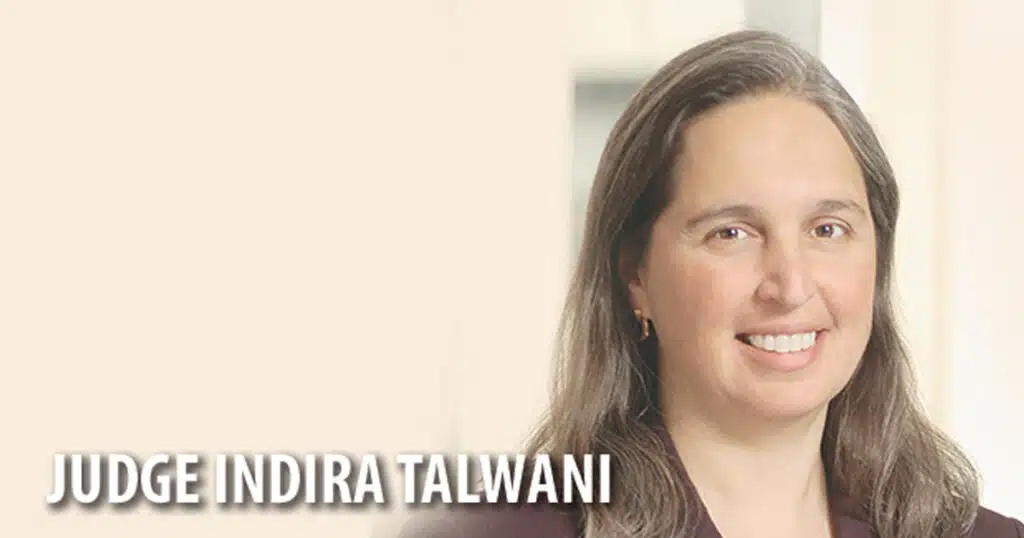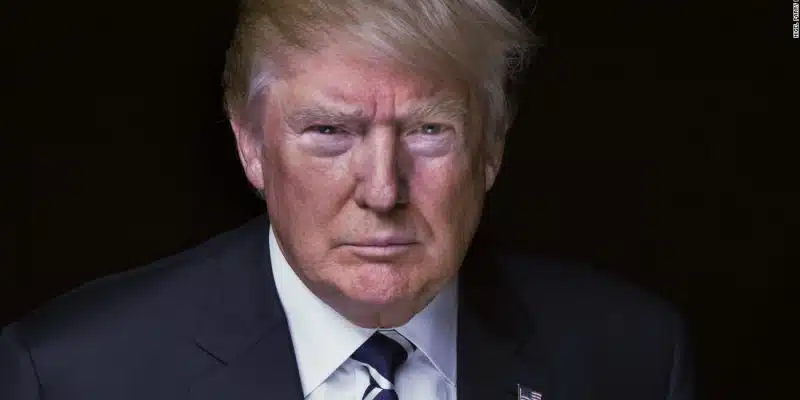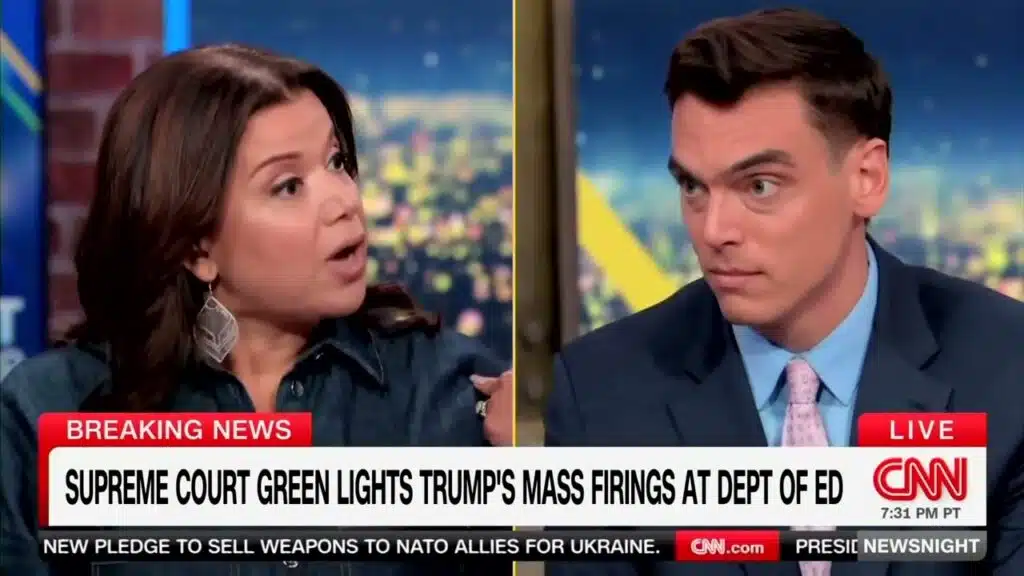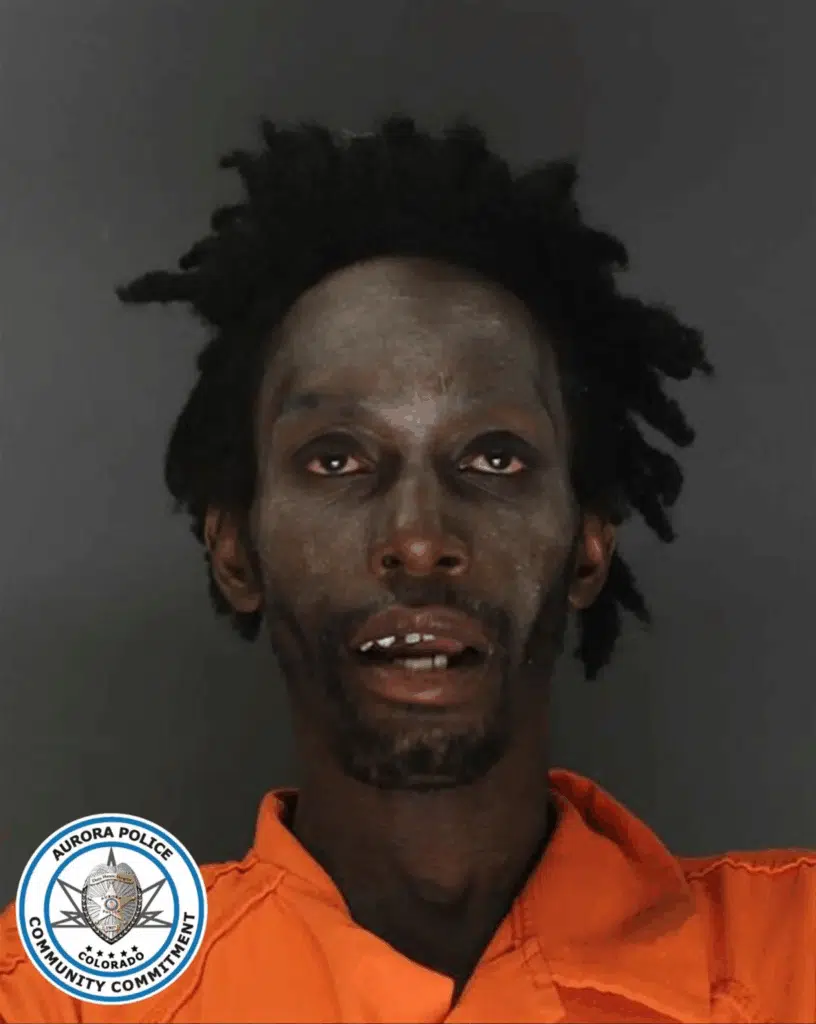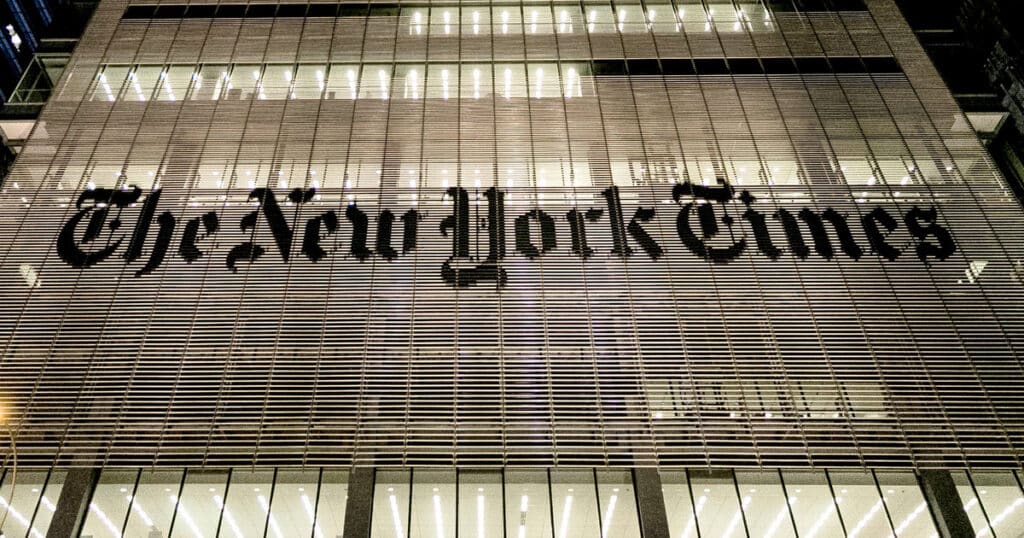
Unchastened by Russiagate, the NY Times Doubles Down in Its Special Counsel Coverage
Special Counsel John Durham, leading a multi-year probe of how U.S. intelligence officials conducted the Russia investigation, has yet to issue his final report. But according to the New York Times, Durham has already come up empty.
Durham’s team, the Times declared in a widely circulated Jan. 26 article, has gone “unsuccessfully down one path after another” and ultimately “failed to find wrongdoing in the origins of the Russia inquiry.” The three bylined reporters, Charlie Savage, Adam Goldman, and Katie Benner, base their conclusion on a “months-long review,” including interviews “with more than a dozen current and former officials.”
Yet a review of the trio’s reporting shows that the Times is still engaging in the same journalistic behavior that has made the paper a reliable disseminator of discredited innuendo about a conspiracy between Donald Trump and Russia. By omitting countervailing information and distorting the available facts, the Times article does not set the record straight. Instead, it attempts to write off the Durham probe before its findings have been released, and whitewashes Russiagate’s key actors in the FBI and Clinton campaign long after they have been exposed.
The article fits into a larger pattern of malfeasance in the Times’ Russiagate coverage, which RCI has documented and the Columbia Journalism Review recently highlighted at length. RCI found, among other shortcomings, a failure to correct clear errors, the use of misleading language to minimize and sanitize the Trump-Russia conspiracy theory, and the refusal to acknowledge broader missteps, especially those involving anonymous sources who turned out to be deceitful. The Times’ failures are especially consequential because of the newspaper’s unique role in framing broader news narratives. That its Russiagate reporting shared journalism’s highest honor, the Pulitzer Prize, underscores a media dysfunction that extends beyond this single influential organization.
The Times’ attempt to cast doubt on the Durham probe has sparked a backlash that the newspaper has actively promoted. The Times’ Savage followed up on his co-bylined Jan. 26 story by reporting that House Democrats Ted Lieu and Daniel Goldman, “citing ‘alarming’ disclosures” in a recent New York Times article,” are demanding a Justice Department investigation into Durham’s inquiry. Savage also noted that Richard Durbin, the Democratic chairman of the Senate Judiciary Committee, has floated the possibility of “oversight hearings.” This week, the Times published an op-ed from Neal Katyal, an acting solicitor general in the Obama administration, which argued that Attorney General Merrick Garland can “discipline and fire” Durham if the special counsel fails to provide an “adequate” explanation for the Times’ “recent revelations.” Katyal also urged Garland to consider “refusing to make the [Durham] report public.”
The Italian Job
The paper’s headline-grabbing takeaway is that the Durham inquiry, rather than “uncovering anything like the deep state plot alleged” by Trump, instead opened a criminal investigation “into suspicious financial dealings related to” the former president himself. The matter is said to have emerged during a trip by Durham and the attorney general who appointed him, William Barr, to Italy, where local officials “offered a potentially explosive tip linking Mr. Trump to certain suspected financial crimes.” According to the Times, “[t]he extraordinary fact that Mr. Durham opened a criminal investigation that included scrutinizing Mr. Trump has remained secret.”
The Times’ extraordinary claim is not supported by its own reporting. Not only has Durham “never filed charges,” the Times admits, it also “remains unclear what level of an investigation it was, what steps he took,” and “what he learned.” The Times then claims that this criminal inquiry fueled a “garbled echo” of news reports making the “erroneous assumption that the criminal investigation” opened by Durham targeted U.S. officials, rather than Trump himself. But the Times’ suggestive claims have instead fueled a garbled echo of erroneous assumptions that Durham’s inquiry led to a “Criminal Investigation Into Trump Himself,” as a Daily Beast “bombshell” headline put it.
Barr rejected the Times’ reporting in an interview with the Los Angeles Times. The Italy tip, Barr said, “was not directly about Trump” and only became a part of Durham’s inquiry because “it did have a relationship to the Russiagate stuff.” Ultimately, Barr says, “it  turned out to be a complete non-issue.”
By embellishing the circumstances surrounding the Italy matter, the Times gave its audience the opposite impression. And rather than grapple with Barr’s comments, Savage spun them as a vindication. Barr “confirmed that there was an investigation involving Trump that Durham, uh, handled,” the Timesman told MSNBC. “So that’s interesting. We didn’t have anyone on the record confirming that before, and so that was nice of him.”
Savage did not respond to RCI’s request for comment, nor did the other two reporters on the Jan. 26 article. A Times spokesperson said the newspaper “stands behind this story and the reporting it contains.”
Alex Wagner of MSNBC interviews Charlie Savage of the New York Times on its “incredible” reporting on Durham’s
Italy trip: “Nobody had any suspicion that this was a criminal investigation into the former President,” she enthuses.
The ‘Indirectly Funded’ Dossier
While falsely suggesting that Durham launched a criminal investigation of Trump for “suspicious financial dealings,” the Times downplays the suspicious dealings of the Hillary Clinton campaign in spreading Trump-Russia conspiracy theories, and how the FBI handled them.
Start with the Steele dossier ‒ the collection of Trump-Russia fabrications authored by former British spy Christopher Steele, paid for by the Clinton campaign, and heavily relied upon by the FBI – which the Times tepidly describes as “opposition research indirectly funded by the Clinton campaign.”
In fact, the Clinton campaign and the Democratic National Committee directly funded the dossier by funneling more than $1 million through their law firm, Perkins Coie, which in turn hired Steele’s client, Fusion GPS. To conceal this arrangement, the Steele money was earmarked as “legal services” and “legal and compliance consulting,” and thereby protected by attorney-client privilege. Last year, the Federal Election Commission fined the Clinton campaign $113,000 for hiding the backdoor payments.
The Steele dossier itself was not traditional political “opposition research” ‒ which implies dirt at least somewhat grounded in fact ‒ but a highly consequential work of fiction. Durham shed considerable light on this when he indicted for lying to the FBI one of Steele’s main purported sources, Igor Danchenko, a Russian expat connected to Democratic Party politics through the Brookings Institution. The Times tells readers that Durham brought a “demonstrably weak” case that ultimately “failed.” While Danchenko was acquitted, his prosecution brought to light embarrassing facts about the FBI’s conduct, which the Times’ dismissive summary ignores.
According to the Times’ account, Danchenko merely “told the F.B.I. that the dossier exaggerated the credibility of gossip and speculation.” This is false. Danchenko explicitly told the FBI that corroboration for the dossier’s claims was “zero”; that he had “no idea” where claims sourced to him came from; and that the Russia-Trump rumors he passed along to Steele came from “word of mouth and hearsay,” including alcohol-lubricated conversations with friends.
The Times also ignores court documents showing that the Steele dossier’s most salacious allegation – that Russia possessed a lurid blackmail tape of President Trump – originated with embellishing tidbits passed on by Charles Dolan, a longtime Democratic Party operative with close ties to Bill and Hillary Clinton. Another of Danchenko’s purported “sub-sources,” Sergei Millian, was also not Russian. Moreover, the evidence in the trial showed that he and Danchenko never spoke.
As for the FBI, the Times describes its reliance on the Steele dossier as a matter of having “used claims from what turned out to be a dubious source … in its botched applications to wiretap a former Trump campaign aide,” Carter Page. The Times adds that the FBI’s wiretap requests contained “errors and omissions.” That again downplays what is already well established: The FBI relied on the Steele dossier to spy on Page while concealing from the FISA court that approved the warrant that the Clinton campaign had paid for it. Moreover, the FBI presented Steele as a “credible” source even though, as the Justice Department inspector general later determined, it was “unable to corroborate any of the substantive allegations” made about Page “which the FBI relied on.” Not only did the FBI fail to corroborate the Steele dossier, it also hid from the FISA court information that contradicted its outlandish allegations.
The Times’ only nod to the FBI’s malfeasance is made in passing, when it notes that Durham secured a conviction of an “FBI lawyer” it does not identify by name, Kevin Clinesmith, who “doctored an email in a way that kept one of those problems from coming to light.”
Durham has also revealed that the FBI was aware as early as January 2017 that Danchenko was lying to bureau agents. But instead of informing the FISA court and withdrawing their efforts to spy on Page, the FBI brass instead made Danchenko a confidential human source – thereby insulating him from legal and congressional scrutiny. While keeping his identity secret, the FBI falsely told Congress that Danchenko “did not cite any significant concerns with the way his reporting was characterized in the dossier,” according to declassified talking points prepared for a 2018 Senate briefing. The FBI paid Danchenko more than $200,000 for his services.
Danchenko wasn’t the only recipient of the FBI’s largesse. At trial, Durham revealed that the FBI, in October 2016, offered Steele a $1 million payment if he could prove the dossier’s allegations. Having no evidence on offer, Steele declined the opportunity. Despite Steele’s refusal to substantiate his material, the FBI still relied on it to file its first surveillance warrant on Page just over two weeks later – and then three more renewals after that.
Durham’s ‘Dubious Sources’
After downplaying the FBI’s fraudulent reliance on the Steele dossier, the Times accuses Durham of relying on “dubious sources” of his own.
In the Times’ telling, Durham “wanted to use” sketchy Russian intelligence memos “to pursue the theory that the Clinton campaign conspired to frame Mr. Trump.” The memos were reportedly hacked by Dutch intelligence and passed on to the CIA.
But The Times’ lone purported example of Durham’s supposed reliance on these “dubious” sources concerns the FBI’s Clinton email server investigation, which is separate from the Trump-Russia probe. One of the supposed Russian memos is said to claim that Attorney General Loretta Lynch pledged to go easy on Clinton in that investigation. The Times presents no evidence that Durham took this alleged Russian document at face value. He may well have been pursuing the matter to confirm what the FBI did not: whether the document’s claims were a fake.
According to previously declassified U.S. intelligence, another purported Russian memo is said to describe American citizens discussing “Hillary Clinton’s approval of a plan” to falsely link Trump to Russian hacking “as a means of distracting the public from her use of a private mail server.” The Times does not provide any evidence that Durham used this memo “to pursue” a theory about a Clinton plot to “frame” Trump. It nonetheless tries to suggest just that, all while asserting that “some U.S. analysts believed Russia may have deliberately seeded” the memos “with disinformation.” Beyond citing unspecified “people familiar with the matter,” the Times also presents no evidence for this claim.
The Times also omits critical public information that challenges its effort to dismiss the memos as “disinformation.” In September 2020, then-Director of National Intelligence John Ratcliffe declassified material related to the Russian memos’ claims about a Clinton plan to tie Trump to Russia. The U.S. intelligence community, Ratcliffe stressed, “does not know the accuracy of this allegation or the extent to which” it “may reflect exaggeration or fabrication” by Russia. But Ratcliffe also stated: “To be clear, this is not Russian disinformation and has not been assessed as such by the Intelligence Community.”
And if U.S. intelligence officials “doubted” the memos’ “credibility,” as the Times asserts, their actions did not reflect it. According to his handwritten notes, then-CIA Director John Brennan apparently took the assertion of a Clinton plot to frame Trump so seriously that he briefed President Obama and other top officials about it in July 2016. In early September 2016, the CIA followed up by submitting an investigative referral to the FBI regarding what it described as “Hillary Clinton’s approval of a plan concerning U.S. Presidential candidate Donald Trump and Russian hackers hampering U.S. elections as a means of distracting the public from her use of a private mail server.” The redacted referral makes reference to gleaning this information from “an exchange,” which could refer to Russia intercepting contacts between Democratic operatives.
It seems unlikely that the head of the CIA would feel compelled to brief the president, and then submit an investigative referral to the FBI, if his agency saw the memos, as the Times describes them, as “dubious” and lacking in “credibility.” When asked about the Russian claims in October 2020, Brennan left open the possibility that they were “accurate,” but insisted that there would be “nothing at all illegal about” Clinton “trying to highlight the reported connections between Trump and the Russians.”
Echoing Brennan, the Times also tries to minimize the alleged Russian-intercepted Clinton plot by asserting that “there were many reasons that suspicions about the Trump campaign were arising” in July 2016, including what the paper calls “Trump’s  flattery of President Vladimir V. Putin.” It seems equally unlikely that if FBI Director Jim Comey – who directly received the CIA’s referral – believed the memos were Russian disinformation he would have declined the opportunity to say so. Yet when questioned about the matter at a September 2020 Senate hearing, Comey was conspicuously forgetful. The CIA referral concerning a Clinton plot to tie Trump to Russia, Comey testified, “doesn’t ring any bells with me.”
In the Times’ presentation, Durham’s effort to look into this matter somehow “parallels” the FBI’s spying on Carter Page. Yet while the Department of Justice inspector general uncovered “at least 17 significant errors or omissions” in the FBI’s Page surveillance applications, the Times does not point to a single impropriety in Durham’s actions. If anything, the known details surrounding the Russian memos’ claim of a Clinton plot raise new questions about how senior intelligence officials handled the Russia investigation. Having received explicit warnings, at the highest level, that the Clinton campaign may be conspiring to falsely tie Russia and Trump, the FBI nonetheless launched investigations of Trump and associates as Russian conspirators.
Team Clinton’s ‘Odd’ Alfa Data
If the Russians did fabricate the intelligence of an elaborate Clinton effort to paint Trump as a Russian conspirator, they were remarkably prescient. When Brennan briefed Obama in July 2016 about a purported Clinton plot to link Trump to Russia, the Clinton campaign was in the early weeks of funding the Steele dossier. And by the time the FBI was handed the CIA referral about Clinton’s alleged machinations in early September, a parallel Clinton-backed plot was also in action.
According to court records filed by Durham, Clinton’s Perkins Coie attorneys, Michael Sussmann and Marc Elias, were actively involved in an elaborate effort, starting in July 2016, to disseminate baseless and likely fraudulent allegations about covert contacts between Trump and Russia’s Alfa Bank. After receiving documents and data provided by Sussmann, the FBI investigated the theory but found it to be baseless.
Here again, the Times deploys its rhetorical energies to obscuring the known facts. In the Times’ rendering, Sussmann “relayed a tip” to the FBI about “odd internet data that a group of data scientists contended could reflect hidden communications between the Trump Organization and Alfa Bank of Russia.” The Times then faults Durham for using the case to “make public large amounts of information insinuating what Mr. Durham never charged: that Clinton campaign associates conspired to gin up an F.B.I. investigation into Mr. Trump based on a knowingly false allegation.”
At Sussmann’s trial, the Times says, “prosecutors presented no evidence that he or campaign officials had believed the data scientists’ complex theory was false.” It is correct that Durham did not obtain admissions from Sussmann and other “campaign officials” to defrauding the FBI. But the Times fails to mention that evidence presented at trial indicates the “data scientists” who formulated the Alfa Bank story had strong misgivings about it.
According to court records filed by Durham, a technology executive named Rodney Joffe tasked researchers to “to mine internet data to establish ‘an inference’ and ‘narrative’ tying then candidate Trump to Russia.” Joffe hoped to “please certain ‘VIPs’” – i.e. his lawyer Sussmann’s mutual clients in the Clinton campaign. (Joffe was personally eyeing a top cybersecurity position after Clinton’s expected election victory.) The researchers expressed misgivings about the project. One team member relayed “continued doubt” about the Trump-Alfa conspiracy theory and worried that it was not driven by data, but by “bias against Trump.”
In reducing the question of deliberate fabrication to whether Clinton campaign operatives “believed the data scientists’ complex theory was false,” the Times also omits that Durham was barred from presenting evidence about the FBI agents’ assessment. At trial, presiding Judge Christopher Cooper, an appointee of President Obama, ruled that the Durham team could not argue that the Alfa Bank data was fabricated unless Sussmann’s defense team raised the issue first. Sussmann’s lawyers, unsurprisingly, did not.
Accordingly, when FBI agent Curtis Heide testified that he thought the Alfa Bank story “may have been fabricated,” Judge Cooper struck it from the record. When prosecutors attempted to present a report, authored by two other FBI agents, which concluded that the Alfa Bank “might have been fabricated,” Cooper ordered it redacted. And when one of the report’s co-authors, FBI cyber-crime specialist Scott Hellman, testified, Cooper decreed that “I will not allow him to talk about whether it’s fabricated or spoofed.” (Hellman was nonetheless allowed to share his view that whoever drafted a document laying out the Alfa Bank theory “was suffering from some mental disability.”)
In a court filing, Durham’s prosecutors also noted that while the FBI “did not reach an ultimate conclusion regarding” whether the Alfa Bank data might have been “genuine, spoofed, altered, or fabricated,” CIA analysts found that the Alfa data “was not ‘technically plausible,’ did not ‘withstand technical scrutiny,’ ‘contained gaps,’ ‘conflicted with [itself],’ and was ‘user created and not machine/tool generated.’”
Because the Times oddly reduced the question of Alfa Bank fabrication to whether Clinton campaign officials admitted to it, none of this information was mentioned – the story ignored the views of virtually everyone else involved.
According to the Times, the Sussmann trial also “showed” that Clinton and her campaign manager, Robby Mook, “did not want him to take the [Alfa Bank] information to the F.B.I.” That assertion is at odds with the omitted fact unearthed by Durham, that Sussmann billed the Clinton campaign for “all or nearly all” of his work on the Alfa Bank project. Sussmann’s September 2016 meeting with FBI lawyer Jim Baker – where he relayed the Alfa Bank “tip” and even provided data purporting to prove it – was charged to Clinton for “work and communications regarding confidential project.”
As an aside, the Times briefly notes that the Clinton campaign hoped that Sussmann “would persuade reporters to write articles about Alfa Bank.” But this downplays that the Clinton campaign – through its operatives at Fusion GPS, the DC-based opposition research firm that also employed Steele – actively coordinated with friendly journalists to disseminate it. Slate’s Franklin Foer shared drafts of his story with Fusion, which in turn instructed him that it was “time to hurry.” When Foer complied and published his story, the Clinton campaign pretended that the article was an independently reported bombshell, hiding their role in bringing it to life.
The Times’ attempt to minimize the Clinton role in the Alfa Bank story also ignores the fact that the campaign fought a Durham subpoena for communications between Fusion and Joffe. To make their case, the Steele dossier’s sponsors claimed that the records were protected by attorney-client privilege.
‘Hunt for Evidence’ Has ‘Failed’
Even though Durham’s final report has yet to be released, the Times declares that his “hunt for evidence” to uncover “intelligence abuses” in the Russia probe has “failed.” The Times invokes the public findings of DOJ Inspector General Michael Horowitz, who, it claims, “found no evidence that F.B.I. actions were politically motivated” and determined that the bureau had a solid basis “to lawfully open” the Trump-Russia collusion probe.
But the Times omits what Horowitz also acknowledged: that his probe was constrained by government rules that forced him to rely on the word of the officials he investigated. In the case of the FBI’s surveillance applications on Carter Page, Horowitz reported that his team did “not find documentary or testimonial evidence of intentional misconduct,” yet also noted that “we did not receive satisfactory explanations for the errors or problems we identified.” And while Horowitz concluded that the FBI’s stated grounds for opening the Trump-Russia probe – a vague tip that a Trump campaign volunteer was told that Russians have “dirt” on Clinton and Barack Obama – were “sufficient,” he attributed that judgment to the Justice Department’s “low threshold for predication.” As Horowitz further told Congress, “The activities we found here don’t vindicate anybody.”
Durham has publicly dissented from Horowitz’s findings on the matter of “predication and how the FBI case was opened,” and noted that his “investigation is not limited to developing information from within component parts of the Justice Department.” Rather than wait for Durham to deliver his findings, the Times is instead echoing the narratives of intelligence officials who assure us that they acted by the book.
Sketchy Sources
The Times’ extensive omission of countervailing information and deployment of disingenuous framing is in line with its Pulitzer-winning coverage of the Trump-Russia investigation, as RCI has previously reported. In the most blatant episode, the Times reported in February 2017 that U.S. investigators had obtained “phone records and intercepted calls” of Trump associates having “repeated contacts with senior Russian intelligence officials in the year before the election.” Four months later, FBI Director Jim Comey testified that this allegation was “not true.” Declassified notes show that Peter Strzok, the lead FBI agent on the Trump-Russia probe, called the Times’ story “misleading and inaccurate.” The Times has nonetheless stood by it.
Having failed to reckon with dubious sourcing, the Times now renews it. While cast by the Times as an authoritative review, the Jan. 26 article relies extensively on what it describes as “people familiar with the matter” – a catchphrase used 10 times. In his sweeping exposé of the U.S. media’s Russiagate coverage for the Columbia Journalism Review, former Times investigative reporter Jeff Gerth found that the paper used that same language “over a thousand times in stories involving Trump and Russia between October 2016 and the end of his presidency.”
In the lone instance when the Times got someone on the record to criticize Durham in the Jan. 26 article, the Times obscures his conflicts of interest. Attorney Robert Luskin is described as having “represented two witnesses Mr. Durham interviewed.” But the Times does not mention who at least one of those witnesses is: Stefan Halper, a longtime CIA operative who served as an FBI informant in its surveillance of the Trump campaign.
The Times begins and ends its Jan. 26 article with another rewriting of history. Whereas Trump and others assert that Mueller found “no collusion with Russia,” the Times declares, “The reality was more complex.” Mueller’s final report, the Times asserts, “detailed ‘numerous links between the Russian government and the Trump campaign.’” But these vague, non-defined “numerous links” turned up no evidence of a coordinated effort between the Trump campaign and Russia to steal the 2016 election. This is why the Mueller team ultimately concluded that it “did not establish that the [Trump] Campaign coordinated or conspired with the Russian government.”
The Times also claims that the Mueller report “established both how Moscow had worked to help Mr. Trump win and how his campaign had expected to benefit from the foreign interference.” As RCI has previously reported, the Mueller team did not establish anything about Russian meddling, beyond that a Russian troll farm spent a miniscule amount of money on juvenile social media ads that were barely about the election. The Mueller report, and subsequent disclosures, also provided considerable evidence to undermine the Times’ assertion, particularly on the foundational allegation of Russia’s alleged theft of Democratic Party emails. And if Trump’s campaign “expected to benefit” from alleged Russian meddling, then it was joined by virtually everyone else – from the Clinton campaign to the New York Times – who recognized that embarrassing emails about the Democratic presidential candidate would only benefit her rival.
In the Times’ view, acknowledging these facts amounts to a “distortion of the Russia investigation’s complex findings.” A more rational inference is that the Times’ complex efforts to distort the available evidence underscore that the Paper of Record has not reckoned with the Mueller probe findings that demolished the Trump-Russia conspiracy theories it amplified.
In his CJR review of the U.S. media’s Russiagate reporting, Jeff Gerth concludes that the Times and other outlets have consistently failed “to report facts that run counter to the prevailing narrative.” This conduct, he warned, marks “the erosion of journalistic norms” and “adds to people’s distrust about the media.” With its elaborate attempt to dismiss the Durham probe before its findings have been released, the Times has only added a new chapter to a long-running deception.
Correction, February 15, 2023, 1:40 PM Eastern
This article has been revised to reflect the following correction:
An earlier version misstated the date of an FBI offer to Christopher Steele of $1 million. It was October 2016, not early 2016.
This article was originally published by RealClearInvestigations and made available via RealClearWire.
